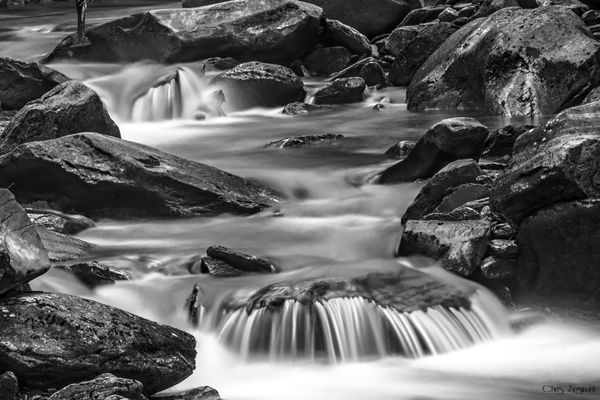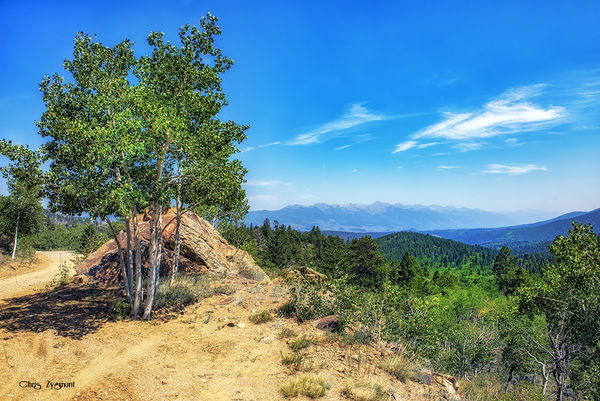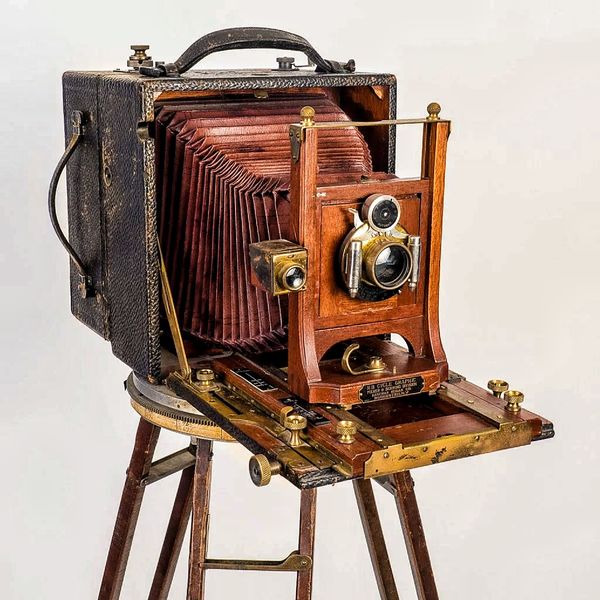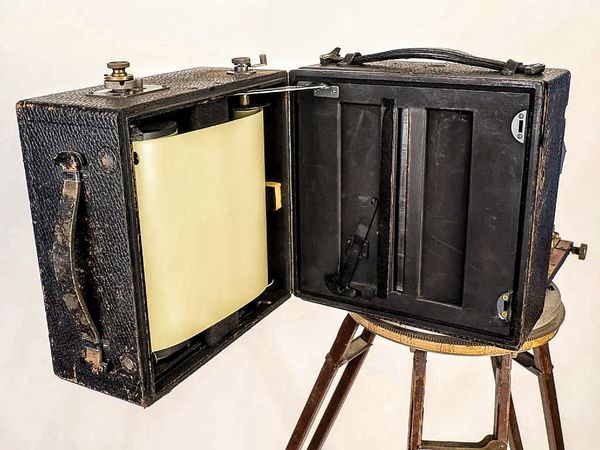In Defense of Post Processing
Dec 26, 2018 03:13:32 #
Bipod wrote:
I try to present not opinions, but arguments and r... (show quote)
Bipod - I enjoyed reading your well - structured reply. Creativity is surely the single most important attribute of the human race. I believe such to be an urge that few of us can ignore. Some will be better at it than others, some will try harder than others, some will enjoy the experience more than others. Most will be average, with occasional touches of something better showing through. I guess that might describe most club and forum photographers.
Photography provides us with a record of life on this planet, and as such "snaps" might well become more important than a brilliantly creative "Moon over Hernandez" or "Rhine 11".

Dec 26, 2018 13:06:30 #
Bipod wrote:
Good point: for example, the artist Matisse used a... (show quote)
Good points, well expressed, Bipod!

Dec 26, 2018 13:45:40 #
Bipod wrote:
Photography doesn't belong to Sony, Canon and Nikon ... it belongs to you,
the photographers.
the photographers.
Amen.
Mike
Dec 27, 2018 15:08:40 #
mudhen wrote:
This argument about post processing almost seems s... (show quote)
So allow me to ask you, Chirs, do you see a difference in types of processing filters,
for example, between global color correction and "sharpen"?
If a fuzzy photo that has had "sharpen" run on it "just as good" as a sharp photo?
How about if everyone can tell it's been processed with "sharpen"?
(I like some fuzzy photos very much--which IMHO would make it doubly wrong to run
"sharpen" on them.)
Dec 27, 2018 15:23:29 #
Bipod wrote:
So allow me to ask you, Chirs, do you see a difference in types of processing filters,
for example, between global color correction and "sharpen"?
If a fuzzy photo that has had "sharpen" run on it "just as good" as a sharp photo?
How about if everyone can tell it's been processed with "sharpen"?
(I like some fuzzy photos very much--which IMHO would make it doubly wrong to run
"sharpen" on them.)
for example, between global color correction and "sharpen"?
If a fuzzy photo that has had "sharpen" run on it "just as good" as a sharp photo?
How about if everyone can tell it's been processed with "sharpen"?
(I like some fuzzy photos very much--which IMHO would make it doubly wrong to run
"sharpen" on them.)
What is all this nonsense about fuzziness? What photos are you looking at? Or is it your eyesight?
Here is a canon FF user, which according to you, can not take sharp photos.
http://ljhollowayphotography.com
Why don’t we compare your nonexistent snapshots to her work?
Dec 27, 2018 15:50:30 #
I generally discard fuzzy photos. The point is to take a sharp photo and make it sharper. Off course if
your blind it doesn't matter.
Here is one of my fuzzy photos that I sort of like.
your blind it doesn't matter.
Here is one of my fuzzy photos that I sort of like.
Bipod wrote:
So allow me to ask you, Chirs, do you see a difference in types of processing filters,
for example, between global color correction and "sharpen"?
If a fuzzy photo that has had "sharpen" run on it "just as good" as a sharp photo?
How about if everyone can tell it's been processed with "sharpen"?
(I like some fuzzy photos very much--which IMHO would make it doubly wrong to run
"sharpen" on them.)
for example, between global color correction and "sharpen"?
If a fuzzy photo that has had "sharpen" run on it "just as good" as a sharp photo?
How about if everyone can tell it's been processed with "sharpen"?
(I like some fuzzy photos very much--which IMHO would make it doubly wrong to run
"sharpen" on them.)

Dec 27, 2018 18:16:51 #
mudhen wrote:
This argument about post processing almost seems s... (show quote)
Just curious: what printer do you use to print it "to about six feet in length"? And what that printers dpi resolution?
Too bad about the poor depth-of-field, but that's inevitable with miniature format, even when you stitch them together.
In half the time you spent with a tripod taking those pan shots, you could have used a 8" x 10" view camera
and ended up with superb resolution, superb depth-of-field, and the ability to make an optical enlargement.
But no doubt there is a way to use four bicycles and a bed frame to carry as much as a pickup truck...if you really, really
want to do that....
Dec 27, 2018 19:34:33 #
I don't do my own printing as I didn't find it economical to do so. I was spending more money on ink than what a lab was doing complete for a
third of the cost. They're being printed at 300 dpi, most often on canvas. I just bring my thumb drive.
Depth of field? I don't know what you see in that downsized compressed jpeg format. Depth of field is dependent on F stop, not PP.
As the F stop goes higher the photo becomes softer. Hence, there's a lot to consider.
I didn't use a tripod as I didn't bring it. It was done hand held. I had a few hours to spare so I took off to the mountains to enjoy
a beautiful day and what I come up is, is what I come up with. Nothing planned.
Even from a view camera, it would still need a good telephoto and stitching of several negatives to capture that scene. Smoke was an issue,
and the view shows about fifty miles across.
third of the cost. They're being printed at 300 dpi, most often on canvas. I just bring my thumb drive.
Depth of field? I don't know what you see in that downsized compressed jpeg format. Depth of field is dependent on F stop, not PP.
As the F stop goes higher the photo becomes softer. Hence, there's a lot to consider.
I didn't use a tripod as I didn't bring it. It was done hand held. I had a few hours to spare so I took off to the mountains to enjoy
a beautiful day and what I come up is, is what I come up with. Nothing planned.
Even from a view camera, it would still need a good telephoto and stitching of several negatives to capture that scene. Smoke was an issue,
and the view shows about fifty miles across.
Bipod wrote:
Just curious: what printer do you use to print it... (show quote)
Dec 27, 2018 20:17:39 #
Bipod wrote:
Just curious: what printer do you use to print it... (show quote)
Was your reasoning to join this forum to switch people to 8x10? Lol!!
Your posts are sounding more and more pathetic. It is 2018 AD, wake up, no one is going to go backwards. Lol! What a comedian.
Dec 27, 2018 20:49:49 #
To create the illusion of depth in two dimensions we must be able to view part of the picture at a different angle from the rest. Mudhen has achieved that admirably in his picture above. That depth has nothing to do with sharpness - although a secondary illusion of depth might be created by a less detailed background or foreground. The importance of using the rule of thirds to help the illusion is evident in the pic. Converging lines can also help.
Dec 27, 2018 21:34:58 #
If y'all will stop yelling at each other for a moment, I have something interesting.
You can have the best of both worlds- an 8x10 View camera that does panoramic photography. They are called Cirkut Cameras. The operat with a slit rear shutter, a clockwork motor all built into a 5x7 or 8x10 body. Attached here is a picture of a wooden antique model, however, there is a photographer somewhere in the Midwestern US how is making them out of metal and equipping them with an electric servo motor. At one times, a few years ago, Kodak was spooling 8 and 10 inch roll film for theses cameras in black and white and color negative.- on special order, of course. Imagine, no lacing together, no distortion- normal lens for the format and a panoramic image in one fell swoop.
There is a Russian made 35mm camera with that same design- perhas someday there will be a digital model.
Theses original camera are best known for military groups of entire regiments where each face were tack sharp and easily recognizable. The group is arranged in a semicircle and the camera pans it end to end. It can actually rotate a full 360 degrees. There are all kids of incredible scenics and events made over the years.
Definitely not a mainstream photographic activity- a niche for sure. There are also 8x24 Banquette Cameras that can bring an entire ballroom full of folks in sharp focus via its tilting front standard.
If you dig down deep enough you will find all kids of STRANGE things in photography- and strange people doing them and writing about them! Makes you appreciate the more simple things in life.
You can have the best of both worlds- an 8x10 View camera that does panoramic photography. They are called Cirkut Cameras. The operat with a slit rear shutter, a clockwork motor all built into a 5x7 or 8x10 body. Attached here is a picture of a wooden antique model, however, there is a photographer somewhere in the Midwestern US how is making them out of metal and equipping them with an electric servo motor. At one times, a few years ago, Kodak was spooling 8 and 10 inch roll film for theses cameras in black and white and color negative.- on special order, of course. Imagine, no lacing together, no distortion- normal lens for the format and a panoramic image in one fell swoop.
There is a Russian made 35mm camera with that same design- perhas someday there will be a digital model.
Theses original camera are best known for military groups of entire regiments where each face were tack sharp and easily recognizable. The group is arranged in a semicircle and the camera pans it end to end. It can actually rotate a full 360 degrees. There are all kids of incredible scenics and events made over the years.
Definitely not a mainstream photographic activity- a niche for sure. There are also 8x24 Banquette Cameras that can bring an entire ballroom full of folks in sharp focus via its tilting front standard.
If you dig down deep enough you will find all kids of STRANGE things in photography- and strange people doing them and writing about them! Makes you appreciate the more simple things in life.
Dec 27, 2018 21:44:06 #
It is only Bipod who is into 8x10. And according to him, anything less is incapable of producing sharp results. Nobody else cares.
Maybe you can talk some sense into him via PM.
Maybe you can talk some sense into him via PM.
E.L.. Shapiro wrote:
If y'all will stop yelling at each other for a mom... (show quote)
Dec 27, 2018 23:51:14 #
And before that, things worked well with plate glass negatives. The only thing is you needed a donkey to haul that equipment around.
I'm glad for today's technology to make things more convenient. Much lighter, compact and it's only getting better.
180 degree views or more are even possible with today's cameras. Attached is an example of that. Several shots hand held.
I'll admit a tripod would have been much better. But just as quickly as the shots were taken, then the files uploaded into
Photoshop, and run through the stitch program and instantly a panoramic view. This one will print up at around seven feet at 300 dpi.
Chris
I'm glad for today's technology to make things more convenient. Much lighter, compact and it's only getting better.
180 degree views or more are even possible with today's cameras. Attached is an example of that. Several shots hand held.
I'll admit a tripod would have been much better. But just as quickly as the shots were taken, then the files uploaded into
Photoshop, and run through the stitch program and instantly a panoramic view. This one will print up at around seven feet at 300 dpi.
Chris
E.L.. Shapiro wrote:
If y'all will stop yelling at each other for a mom... (show quote)
Dec 28, 2018 01:55:48 #
tdekany wrote:
It is only Bipod who is into 8x10. And according to him, anything less is incapable of producing sharp results. Nobody else cares.
Maybe you can talk some sense into him via PM.
Maybe you can talk some sense into him via PM.
My grandmother had an expression- translated- "That would be a helpful as a laxative would be to a a dead guy"! It sounded funnier when she said it in Yiddish!
Have a good night!
Dec 29, 2018 03:22:55 #
tdekany wrote:
What is all this nonsense about fuzziness? What photos are you looking at? Or is it your eyesight?
Here is a canon FF user, which according to you, can not take sharp photos.
http://ljhollowayphotography.com
Why don’t we compare your nonexistent snapshots to her work?
Here is a canon FF user, which according to you, can not take sharp photos.
http://ljhollowayphotography.com
Why don’t we compare your nonexistent snapshots to her work?
What utter piffle. I never said a Canon FF can't take sharp photos.
What's you're problem, tdekany?
Obviously--as everybody except you knows--it's a matter of ENLARGMENT:
how big one plays to display the image file.
There is only so much information in any image capture. And the larger
the format, the more information can be captured.
Of course, in any given shot, resolution is only as good as the weakest link in the chain:
subject detail. lighting, focus, motion shake, lens aberration, aperture distortion, sensor
microlenses, sensor geometry, sensor photocells, de-mosaicing algorithm, post-sprocessing,
image compreession---did I forget anything? Probably. Digital photography is a very
complex system--some people just can't understand it.
But don't feel bad or left out, tedekany--in any chain, you're the weakest link.
Oh, and by the way, I don't take "snapshots", sorry. I'll leave that to you.
If you want to reply, then register here. Registration is free and your account is created instantly, so you can post right away.






